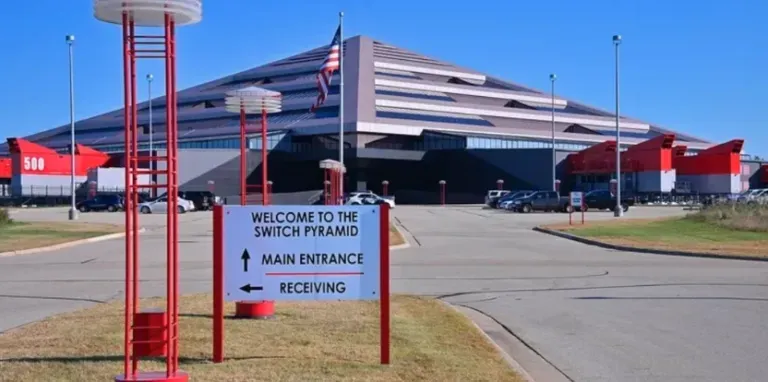Tax breaks for AI data centers have emerged as a hot topic in recent debates about economic development and technological investment. As states vie for a piece of the booming AI industry, they often offer substantial tax incentives to entice data center operators, with claims that these facilities will drive economic growth and bolster tax revenues. However, critics argue that the long-term economic impact of these subsidies is still unproven, as billions of dollars are funneled away from state budgets each year. In particular, the Georgia data center tax breaks have come under scrutiny, as local leaders question whether these financial incentives are truly benefiting their communities or merely enriching large tech companies. The ongoing tax incentive debate raises essential questions about the balance between attracting innovation and ensuring fiscal responsibility for citizens.
The rapid expansion of AI infrastructure has drawn attention to the fiscal policies surrounding data centers, specifically regarding financial incentives like investment grants and operational subsidies. These taxpayer-funded advantages are designed to foster economic growth by attracting tech companies to build large-scale operations, commonly known as servers and computational farms. However, as more states roll out various data center subsidies, the economic ramifications remain contentious among policymakers and economists. Discussions surrounding the economic impact of data centers reveal a complex landscape where benefits may not outweigh the growing financial burdens they impose on local governments. As stakeholders continue to evaluate the effectiveness of these strategies, a broader conversation about sustainable fiscal practices in the tech sector is becoming increasingly imperative.
The Increasing Financial Burden of Tax Breaks for Data Centers
As states eagerly offer tax incentives to attract data center investments, the financial ramifications of these subsidies have raised significant concerns. In 2023 alone, states like Texas predicted a staggering $1 billion cost for their data center tax exemption program, a sharp increase from just $157 million the previous year. These huge figures highlight the growing burden that tax breaks pose on state budgets, with many regions missing out on roughly $100 million annually. The model of subsidizing data centers as a means to stimulate economic activity is increasingly questioned, especially considering the proportion of lost revenue often outweighs the benefits derived from those investments.
Furthermore, these financial incentives may not yield the expected returns. Studies show that several states suffer from a hidden cost—a tax revenue loss that significantly surpasses the benefits brought by these centers. Economists argue that the escalating tax breaks for corporations heavily distort public fiscal health, creating an unsustainable cycle where states continually expand incentives to compete with one another for data center installations. Such spending must be carefully assessed against its long-term economic viability and cost implications for everyday citizens.
Georgia’s Tax Break Debate: A Case Study in Tax Incentives
Georgia stands at the forefront of the tax incentive debate, particularly concerning its growing data center industry. With tax exemptions waiving a predicted $327 million in local and state sales tax collections next year, policymakers are grappling with balancing economic growth and fiscal responsibility. Prominent state figures, including Senate Finance Committee Chairman Chuck Hufstetler, argue that current tax breaks may be unwarranted, suggesting that the focus should shift from incentivizing speed of establishment to ensuring that local economies are not negatively impacted.
Despite claims of economic empowerment through these incentives, critics highlight the concerning lack of long-term local job creation. Many data centers, while profitable for their parent companies, often employ only a minimal workforce, leaving communities to shoulder the lasting costs. The contrasting viewpoints in Georgia reflect a broader narrative concerning the effectiveness of data center tax breaks—whether they’re genuinely able to stimulate local economies or simply enrich a few major players in the tech industry.
The Impact of AI Data Center Investments on Local Economies
With the rapid rise of artificial intelligence technologies, states are keen to secure AI data centers to enhance their economic landscapes. The influx of investment in AI data centers is often presented as a major opportunity for growth, promising enhanced infrastructure and increased property taxes. However, local communities are increasingly scrutinizing these claims, as the negative fiscal impacts and the implications of heavy tax incentives become more apparent. The push for AI-driven data centers may ultimately enrich a few tech giants at the cost of local taxpayers.
Moreover, as states strive to position themselves as leaders in the AI sector, the potential economic impact remains in the balance. Economists warn that blind commitment to attracting AI data center investments, without thorough analysis of the corresponding financial implications, may lead to significant long-term consequences. Understanding how these centers shape local economies and the actual benefits versus costs of such tax incentives is crucial for sustainable growth that meets the needs of local citizens.
Evaluating the Cost-Benefit Ratio of Data Center Subsidies
Evaluating the cost-benefit ratio of data center subsidies has become increasingly essential for policymakers. Many states have enacted expansive tax breaks aimed at attracting data centers, which are understood as key players in the digital economy. However, the hidden costs of these incentives often include substantial lost revenue streams that could have been allocated to essential public services. The research by Good Jobs First highlights that, without careful scrutiny, these tax breaks can escalate rapidly, leading to unforeseen fiscal distress for state budgets.
Furthermore, the conversation surrounding these financial incentives raises critical questions about the fairness and effectiveness of such subsidies. Recent studies indicate that the anticipated economic benefits of data centers frequently do not materialize as projected, prompting economists to urge a reevaluation of existing tax policies. If states continue to focus solely on attracting data centers through financial handouts, they may overlook the more nuanced reality of sustainable fiscal management and fair competition among businesses that provide real value to the community.
Transparencies and Concerns Surrounding Data Center Operations
The significant opacity enveloping data center operations complicates discussions about their economic impact. With various states not sharing tax expenditure data, a clear understanding of total expenditures on subsidies remains elusive. This lack of transparency leads to greater public skepticism regarding the touted economic benefits and exposes states to potential financial pitfalls. As policymakers consider lucrative data center contracts, they must navigate not only the potential for job creation but also the risk of sinking taxpayer dollars into ventures that do not yield promised returns.
Community concerns rise as residents express apprehension about the long-term effects of data center establishments. Beyond financial implications, concerns about environmental impacts and resource allocation come to the fore. Localities must weigh the financial allure that data centers provide against possible detrimental outcomes, including increased energy demand and infrastructure strain. Continued activism and public awareness are vital for ensuring that local populations have a say in the decisions that could affect their communities for years to come.
Data Center Jobs: Myth vs. Reality
A critical aspect of the data center development debate revolves around the job creation narrative. While states argue that offering tax breaks will lead to significant job opportunities and economic growth, the actual employment numbers often tell a different story. Many data centers, especially those driven by AI, operate with minimal staff, meaning the extensive tax breaks are not creating the large-scale employment opportunities that were promised. Furthermore, the types of jobs offered are frequently limited in scope and pay, leading to questions about the true economic benefits for local communities.
This disparity between expectations and reality engages policymakers and community leaders in difficult discussions about the trade-offs involved in granting tax incentives. Local officials must decide whether to pursue these investments when the potential job benefits might not justify the heavy financial costs and loss of tax revenue. Ultimately, a more honest conversation about the nature and scope of jobs produced by data centers is essential for communities to make informed decisions that align with their economic goals.
Impacts of Hidden Costs on State Budgets
Hidden costs related to data center tax incentives have significant implications for state budgets. With some states suffering from untracked financial losses due to extensive subsidies, the question arises: who ultimately bears the fiscal burden? While data centers promise growth and infrastructure improvements, these benefits often come at a substantial price, as lost tax revenues accumulate year after year. Public officials need to remain vigilant and transparent about these costs, as communities deserve to understand the full economic landscape surrounding data center investments.
Moreover, states are beginning to question whether they can afford to maintain such tax incentives while still meeting other public service needs. The necessity for a comprehensive fiscal analysis that accounts for hidden costs can lead to more sustainable policies that prioritize community welfare over short-term economic gains. Without a rigorous reevaluation of the financial trade-offs, policymakers risk further entrenching problems that could extend well beyond the lifespan of the data centers themselves.
Balancing Economic Development and Local Community Needs
Balancing economic development with the needs of local communities is a crucial aspect of the ongoing data center tax incentive debate. As states continue to court data center investments, it is imperative to consider how these facilities impact local ecosystems. Communities often find themselves grappling with the complexities of rapid industrial growth, where promises of economic revitalization clash with rising concerns over environmental degradation, power consumption, and resource allocation. To forge a productive partnership, states must address whether the economic benefits align with the social and environmental needs of their constituents.
Moreover, local community engagement is essential for creating equitable economic opportunities. By facilitating open conversations among residents, policymakers, and data center operators, states can ensure that the long-term interests of all stakeholders are taken into account. The challenge lies in developing a framework for data center incentives that prioritizes transparency, accountability, and sustainable practices, ultimately leading to enhanced socio-economic vitality without compromising community integrity.
Future Prospects for Data Center Subsidies
As the landscape for data centers continues to evolve, the future of subsidies remains uncertain. With growing awareness of the potential drawbacks associated with tax breaks, states must rethink their strategies to attract data center investments. The increasing scrutiny from economists and community activists alike may lead to a restructured approach that emphasizes fair competition and sustainability over blind giveaways. The dialogue surrounding data center subsidies is likely to intensify as more stakeholders align their interests with the urgent need for responsible economic growth.
Looking forward, a shift towards transparent assessment processes could play a pivotal role in determining the viability of data center tax incentives. By undertaking thorough financial evaluations and prioritizing community input, states can better navigate the complex interplay of economic growth, local impact, and fiscal responsibility. As the digital economy expands, the urgent call for smart policymaking in relation to data center subsidies will only become more pronounced in the years to come.
Frequently Asked Questions
What are the main tax breaks for AI data centers and how do they function?
Tax breaks for AI data centers typically include exemptions from sales tax on equipment purchases, property tax reductions, and other financial incentives designed to attract investment in these facilities. These breaks aim to reduce operational costs for companies, making it financially viable to establish and operate AI data centers within a state.
How do tax breaks for AI data centers impact local economies?
While advocates argue that tax breaks for AI data centers lead to economic growth and increased tax revenue, research shows that the costs associated with these subsidies can outweigh the benefits. Economists suggest that while data centers may generate some local jobs and spending, the overall fiscal impact may be negative, diminishing local tax revenues in the long run.
What is the economic impact of data centers receiving subsidies?
The economic impact of data centers receiving subsidies can be complex. On one hand, these facilities create jobs and require local services. On the other hand, the subsidies can lead to significant revenue losses for states, as seen in reports stating that lost tax revenues often exceed the financial contributions from the data centers themselves.
What ongoing debates exist regarding Georgia data center tax breaks?
The debate surrounding Georgia data center tax breaks focuses on their necessity and effectiveness. Critics argue that these incentives disproportionately benefit large companies while the promised economic gains are overstated. Recent proposals aimed at reevaluating or suspending these tax breaks indicate a growing concern about their long-term fiscal implications for the state.
How can the tax incentive debate impact future AI data center investments?
The tax incentive debate can significantly influence future AI data center investments. If states begin to question the effectiveness of these tax breaks, it may lead to a reevaluation of existing incentive programs or the introduction of stricter regulations. Consequently, data centers might consider other states with more favorable tax structures.
Are tax incentives for AI data centers worth the financial risk to states?
Whether tax incentives for AI data centers are worth the financial risk is widely debated. Some analysts argue that while the immediate benefits may seem appealing, the long-term fiscal impact, including lost tax revenues and strained local services, could result in more harm than good for state budgets.
What types of companies benefit most from tax breaks for AI data centers?
Major technology companies, often referred to as ‘hyperscalers’, benefit most from tax breaks for AI data centers. These companies leverage large tax exemptions to significantly reduce operational costs, which can lead to increases in their infrastructure investments without corresponding benefits for local economies.
How do economists evaluate the effectiveness of data center subsidies?
Economists evaluate the effectiveness of data center subsidies by analyzing fiscal impacts versus claimed economic benefits. Studies suggest that many firms may not rely solely on these incentives for their location decisions, which raises questions about whether the subsidies truly stimulate significant economic growth.
What are the implications of tax breaks for AI data centers on local public services?
The implications of tax breaks for AI data centers on local public services can be detrimental, particularly if these subsidies result in reduced tax revenues. Communities might struggle to maintain or improve public infrastructure, as the funding from data centers does not adequately cover their impact on local resources and services.
What criticisms are there about the transparency of tax breaks for AI data centers?
Critics highlight a lack of transparency surrounding tax breaks for AI data centers, noting that many agreements are confidential. This opacity can obscure the true fiscal impacts of these incentives, raising concerns among policymakers and the public about accountability and the long-term viability of funding essential services.
| Key Points | Details |
|---|---|
| Tax Incentives for Data Centers | States offer tax breaks to attract data centers, claiming they are vital for property and income tax revenue. |
| Economic Impact Debate | Critics argue tax breaks cost states billions and may not yield proportional benefits; advocates counter that without incentives, data centers may leave. |
| Secrecy in Agreements | Many tax agreements are not transparent, making it difficult to assess true fiscal impacts. |
| Case Study: Georgia | Data centers in Georgia have led to significant tax revenue losses, sparking legislative scrutiny and debate on their economic value. |
| Rural Areas Benefits | Proponents claim data centers are advantageous for rural areas due to lower workforce requirements and significant local revenue generation. |
| Environmental Concerns | Communities are worried about the environmental impact and the sustainability of resources needed for data centers. |
Summary
Tax breaks for AI data centers have become a contentious issue as states seek to attract investment amid an AI boom. While these subsidies aim to promote economic growth and tax revenue, mounting evidence suggests they may come with significant risks, including substantial revenue losses that outweigh the purported benefits. It is essential for policymakers to weigh the long-term fiscal impacts against short-term gains, considering whether these incentives truly serve the public interest or merely benefit a handful of technology firms.



